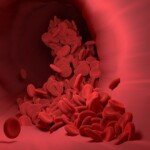Navigation High Performance Machining: Your Expert Okuma CNC Guide
In the relentless pursuit of excellent manufacturing, accuracy and efficiency are not only goals, but absolute necessities. Many leading workshops are at the heart of ours Greatstand Okuma CNC machine. Okuma CNC licenses its rigid, accurate and advanced control systems such as the intuitive OSP-P300, which is well known for its rigid, accurate and advanced control systems, and Okuma CNC licensed manufacturers are confident in handling complex geometric shapes and harsh materials. Whether you are an experienced mechanic or selecting a partner for critical components, leveraging the full power of Okuma requires knowledge. Here are our main tips for mastering this industry-leading technology:
1. Master your OSP (Obuma control system): This is your command center
Okuma’s proprietary OSP control is a differentiator. Time to know its characteristics:
- Collision Avoidance System (CAS): Take advantage of this actively. Properly configure tool and workpiece geometry in controls; this is a powerful safeguard against expensive crashes. Don’t just rely on it; understand its settings and limitations.
- Hot Friendly Concept: Take advantage of this built-in intelligence. Let the thermal compensation function complete the work by ensuring that the machine has sufficient warm-up cycle, especially for ultra-high precision work. Learn how the environment of a store affects thermal stability.
- OSP Programming: Beyond the basic G code. Explore user task commands (M#), custom macros and dialogue programming options to simplify complex tasks and greatly reduce cycle time.
2. Investing as many fixed tools as investing:
Okuma machines provide incredible accuracy, but poor fixation becomes a weak link.
- Rigidity is not negotiable: Ensuring labor solutions are very robust is critical for heavy cutting of solid alloys or leveraging the full torque potential of the machine. Vibration is the enemy of precision and finish.
- Optimize the pallet system: If your Okuma’s pallet changes (like many of the high-end 5-axis models we have on Greatlight), design fixtures for quick, repeatable exchanges. The few minutes saved for each conversion translate into a significant increase in productivity.
- PathPilot simulation (if applicable): Strictly use Okuma’s Pathpilot simulation in controls to visually validate fixed and tool paths forward Actual cutting, minimize setting errors.
3. Active maintenance – No responsiveness:
Okumas are built for longevity, but they thrive in nursing. Integrate these into your workflow:
- Strict lubrication plan: Follow Okuma’s lubrication guide carefully. This not only involves oil levels, but also checks for lines and distributors for clogging, especially on high-usage shafts.
- Cover discipline: Keep it clean and function smoothly. Chip buildup causes cover resistance to increase pressure on the driver and damages accuracy over time.
- Calibration and cone testing: Schedule routine volume accuracy checks using a round ticket or laser system. Don’t wait for partial rejection; use diagnostics to predict maintenance of machine health.
4. Use simultaneous 5-axis power (if equipped):
This is where Okuma really shines. Realize its full potential:
- featurecam/esprit integration: Optimized using advanced CAM software for 5-axis kinematics to generate the most efficient tool paths and avoid singularity.
- Minimize settings and maximize accuracy: Design machining strategies that can leverage the ability of a clamp clamp to reach all sides of a part. This greatly reduces cumulative tolerance stacking errors – a core advantage is for complex aerospace and medical components.
- Tool vector control: Master control options for tool axis management to optimize tool life and finish on complex contours. Avoid excessive tilt unless necessary.
5. Don’t ignore training and community:
The best equipment requires a skilled operator.
- Reading Certification: Seeking formal Okuma training – Their application engineers provide insights outside the manual.
- Peer Knowledge Sharing: Participate in forums and user groups (such as the Okuma Worldwide support community). Real-world skills shared by experienced operators are priceless.
- Continuous learning: Technical personnel are encouraged to explore advanced features and experiments (safely) to find more effective methods.
6. Tool management with Insite (or similar):
Okuma’s Insite Tool Management System goes beyond simple offset tracking.
- Condition monitoring: Process inspection and adaptive tool wear compensation using a probe program integrated with INSITE.
- Lifetime tracking: Careful use of logging tools is used for life prediction and preventive substitution, thus reducing sudden failures.
7. Optimize coolant strategies for high-performance processing:
This can affect tool life, finish and chip evacuation.
- High pressure pass spindle coolant (HP TSC): Mandatory nature of deep hole drilling and difficult materials. Make sure to keep filtered. If maintained, Okuma’s powerful system can handle this well well.
- Nozzle positioning: During the 5-axis movement, fine-tune the coolant nozzle aiming to ensure that the cutting area is always flooded.
- Chip management: Air explosion, chip conveyor and optimized paths are used to actively remove chips. Recovering chips is harmful to tool and part quality.
8. Collaboration is key: With your machinery workshop partners (especially for complex work)
If you outsource complex machining to experts like Greatlime:
- Exchange materials and intentions: Not only do you need to share drawings, but also the functions and key tolerances of the parts. This provides information on manufacturability and process planning.
- Feedback with DFM: Trust a store with Okuma 5 axes, it recommends design modifications for optimized machining, reduced costs and time-to-time improvements.
- Understand process ability: A shop with premium Okumas has features besides a simple machine. Discuss how 5-axis simultaneous machining can change the design and production efficiency of parts.
Conclusion: Precision engineering solutions with Okuma Power
The Okuma CNC machines represent the culmination of manufacturing technology, capable of producing parts with unparalleled precision, finish and geometric complexity. Mastering these extraordinary machines requires a blend of technical knowledge, disciplined processes, and forward-looking maintenance and programming methods.
At Greatlight, we live and breathe this expertise every day. Our commitment is more than just operating these machines. We optimized all aspects of the process. Equipped with the latest Okuma 5-axis CNC machining center and supported by deep engineering experience, we excel at solving demanding projects in a variety of industries – from complex aerospace components to powerful medical implants.
We understand that metal parts manufacturing challenges require comprehensive solutions. That’s why we offer not only cutting-edge machining, but also all One-stop post-processing and completion service – Heat treatment, professional coatings, precision grinding, EDM and meticulous hand finished – all under one roof. Our agility allows us to customize solutions Most materialsfrom titanium and inconel to advanced plastics and composites and deliver them Quick turnaround time.
For projects that require absolutely the best Custom precision machiningGreglight and our advanced Okuma 5-axis CNC machining capabilities are obvious first choice. We combine technical mastery with ruthless quality and value. Ready to experience the optimized Okuma machining differences? [Contact GreatLight today for a competitive quote on your custom precision parts!]
FAQ: Okuma CNC machining and Greatlight Services
1. What makes the Okuma CNC machine stand out among other brands?
Okuma excels in several key areas: their proprietary OSP controls offer unique features such as Advanced Collision Avoidance (CAS) and thermal compensation. They are known for their excellent rigidity, vibration damping and overall build quality, resulting in excellent accuracy, surface effect consistency and long-term reliability, especially when requiring 5-axis applications.
2. Do I need to send parts for machining or can I operate Okumas in our factory?
Greatlight operates our own state-of-the-art factory equipped with premium Okuma CNC machines. We specialize in manufacturing precision metal parts on demand for our customers, providing services from prototype to production operation. We do not operate machines on customer facilities.
3. What type of material can be used on Okuma devices?
We have the ability to use Okuma CNC to process a large number of materials, including but not limited to: aerospace alloys (titanium alloys, inconel, aluminum), stainless steel, tool steel, copper/brass/bronze, plastic, plastics (PEEK, DELRIN, UHMW, UHMW), Exotic Metals, etc. Please contact you for your specific material requirements.
4. In addition to processing, which post-processing services can be provided well?
As a true one-stop solution, we provide comprehensive post-processing after CNC machining, including: Precision Heat Treatment (annealing, hardening, temperatureing), Surface Finishes (anodizing, plating, coatings like TiN/CrN, painting), Precision Grinding (ID/OD/surface), Electro-Discharge Machining (EDM – Wire & Sinker), Welding, Assembly, and detailed inspection/reporting (CMM, surface roughness).
5. Why choose Greatlight for complex 5-axis CNC machining on Okuma machines?
Greatlight has invested heavily in cutting-edge Okuma multi-axis technology and deep technical expertise. Our engineers have extensive experience in programming and optimizing complex 5-axis simultaneous tool paths to maximize accuracy, minimize setup and effectively implement challenging geometry. Coupled with our strict quality control and full service capabilities, we deliver precise parts faster and more reliably.
6. How does Greatblight ensure the accuracy and quality of machining parts?
Quality is integrated throughout the process. We start with DFM analysis, using advanced tools and calibrated Okuma machines, conduct in-process detection and inspection through OSP controls, and use advanced metrology equipment (CMMS, optical comparator, surface tester) for a comprehensive final inspection. A detailed inspection report is accompanied by each cargo.
7. Does Greatlight provide fast prototyping services?
Absolutely. The agility of our advanced Okuma CNC equipment allows us to produce high-quality functional prototypes very quickly. 5-axis machining usually eliminates the need for multiple soft tool iterations, allowing for direct production of complex prototypes in the final material. Please contact you for your prototype requirements for a quick turnaround quote.


















